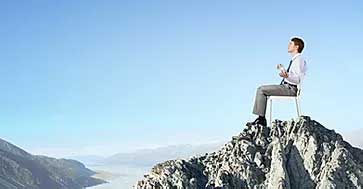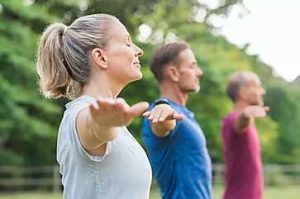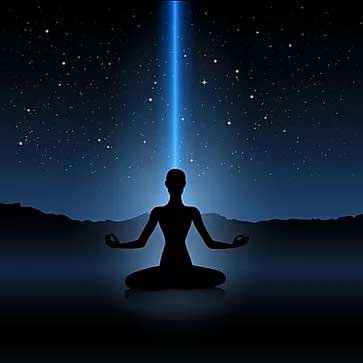3 Steps to Get the Most Out of Meditation
There are many meditative techniques available today that can be used to reduce stress, minimize distractions, and cultivate deeper awareness. Techniques such as Mindfulness, TM (transcendental meditation), NLP (neuro-linguistic programming), hypnotherapy, and a variety of guided imageries are all popular today. Yet many of these practices tend to miss one or more of the 4 essential steps to truly deep and transformative meditation.
Today’s trends of meditation techniques, more often than not, are watered-down or one-dimensional approaches to meditation, and thus can’t deliver on its full power and benefits. This leads to people finding it challenging to meditate and quiet their mind. Therefore, they often give up on it or get frustrated, which sabotages their results. As people inspired to make a positive impact in the world, we want to maximize our effectiveness and harness our time most efficiently. So how can we get the most value out of meditation?
There is a growing interest in the use of meditation to help leaders become more effective in all areas of performance, reducing stress, and creating fulfillment in our lives. Meditation can be used to help us access our creativity, cultivate a deeper sense of peace, rewire our brain’s connectivity, become more present or aware, develop intuitive connection, and tap into greater states of innovation. Although, there are often resistances that come up for people when beginning to meditate.

Meditation, when regularly practiced, has overall benefits for a person’s inner-state and performance. It helps leaders access greater potentials in their lives. It also helps leaders become more agile in their mindsets, thus making them more adaptable and flexible leaders.
In this 3-part article I lay out the 4 most essential steps that will allow you to more easily reach deep levels of meditation while reaping the most reward from it. In Part 3, I will also share the latest neuroscience understanding of the 5 brainwave states that we can learn to access at will, and which ones you want to be in to get the most benefit from meditation. Finally, I will share with you one of the most effective systems of meditation that I have experienced to date, of the many meditative styles I have worked with.
For some, meditation may seem simple. For others, they may feel it is ‘easier said than done’. And most people who try to cultivate a practice of meditation find themselves hitting resistance at different points along the way. A few common resistances that keep people from meditating include: “don’t have time”, “get easily distracted in meditation”, or “don’t know how” to properly meditate. The truth is even just a few minutes of meditation can have positive benefits and starts to rewire your brain for greater overall connectivity and performance. Distractions are normal when sitting in meditation; the key is to gently persist in bringing your awareness back to the meditation, until finally the chatter mind lets go.

If there is one thing that I have learned over the years of cultivating my own practice it is this: Things flow according to how they are initiated. How you begin something sets the whole tone for how the rest of that process will go. When I start with intent, presence, and take my time with say the first three steps, rather than just trying to rush in, then the whole experience flows better and is more deeply enriching and sustaining. This is especially true for meditation and other spiritual practices.
I find that getting prepared for meditation is one of the most imperative steps that allows you to go into deeper states of awareness to cultivate inner peace, gain insight, and have the overall benefits that meditation can offer. Here are the first three essential steps to initiating and preparing you for your meditation practice. These steps help you more easily and naturally drop into a deep meditative state.
The 3 Essential Steps to Getting Into Deep Meditative States:
Step 1: Relax the Body

Preparing for meditation through relaxation of the body is essential to be able to go deep into meditative state without discomfort. Your mind cannot let go if your body is holding too much tension. When you are able to release tension held in the energy field, mind, and body it allows you to become fully present. Relaxation is also essential for keeping stress levels down in the body. When stress levels are down it is easier to think coming from a sound mind.
As a leader, lowering your stress levels will allow you to consider the best options in each situation rather than being reactive. The most effective body position to be in for meditation is sitting on a chair with feet on the floor uncrossed, or sitting lotus-style or za-zen on the floor, with a straight spine.
One simple, yet effective technique to relaxing the body is to start at the feet and work your way up, body-part-by-body-part, instructing each part of your body to relax. You can even talk to your body softly saying “Feet, relax…” and repeat this command several times for each respective body part, until you gradually work your way up to the face and head. Along with the command, is the feeling of letting all the tension melt away until that part of the body becomes totally at ease. Most people have no idea how much tension they hold in their face alone, so spend extra time here with the jaw, cheeks, eyes, forehead, ears, and scalp. You will look and feel younger when you spend time relaxing all parts of the face.
Relaxation techniques have been used for decades by some of the world’s greatest thinkers. Thomas Edison would use a technique where he would ask himself a question then allow himself to go into a deep meditative state until he was on the brink of falling asleep and then would wake up. This technique allowed him to access greater insight and find the answers to his questions. Relaxation allows you to access your deeper wisdom and creativity.
Step 2: Proper Breathing
 When you breathe deeply you get deep results. Although, if you breathe shallow your results will reflect that by giving you shallow results. Taking slow, deep, and steady breaths in through the nose and out through the mouth sends the message to the brain to activate the parasympathetic response, which relaxes the body. Shallow quick breaths, on the other hand, activate the sympathetic nervous system, which raises adrenaline or can trigger the fight or flight
When you breathe deeply you get deep results. Although, if you breathe shallow your results will reflect that by giving you shallow results. Taking slow, deep, and steady breaths in through the nose and out through the mouth sends the message to the brain to activate the parasympathetic response, which relaxes the body. Shallow quick breaths, on the other hand, activate the sympathetic nervous system, which raises adrenaline or can trigger the fight or flight
response. So, deep breathing into the lower abdomen is best for meditation. Science has also recently verified that breathing in through the nose helps to stimulate the limbic region of the brain, which governs our memory and emotional functions. Deep breathing in through the nose thus helps to enhance memory and calm emotions.
Breath is one of the most essential human needs for life and for performance. Proper breathing can increase the oxygen flow in the body and thus increase the oxygen flow to the brain. This increase in oxygen will stimulate creativity in the mind, relaxation of the body, and helps to release stagnant energy. In order to breathe properly in meditation: comfortably breathe from the bottom belly, into the top of the lungs, and then release in the reverse order.
Step 3: Visualization of Bringing Light into the Body

The third step of getting into meditation involves visualizing white-light coming down into the body from above. The focus is on the crown chakra at the top of the head. The light enters in through the crown and then flows down the center core of the body, and to the base of the spine and then out to all the other body parts, filling your entire body with light. This white light represents pure energy from Source. It purifies, energizes, and helps enhance a feeling of connection.
The third step of getting into meditation involves visualizing white-light coming down into the body from above. The focus is on the crown chakra at the top of the head. The light enters in through the crown and then flows down the center core of the
body, and to the base of the spine and then out to all the other body parts, filling your entire body with light. This white light represents pure energy from Source. It purifies, energizes, and helps enhance a feeling of connection.
When you focus on this visualization of white light coming in through the crown it will open the other chakras as well. This visualization increases the light flow to your body and energy field. Spending 15 minutes with this preparatory process of relaxation, proper breathing, and bringing white-light into the body all combine to increase your life force energy, while relaxing you into a deeper state of peace and preparing you for an even more effective and transformative meditation. Just from practicing these first three steps alone on a daily basis, you can become a more magnetic leader who is in-tune with the greater potential that is in you
Click here to go to Part 2 of this blog series on meditation, where we talk about the two main types of meditation to focus on after the preparatory process, plus the most effective system we have found for maximizing the results we can get from meditation.
